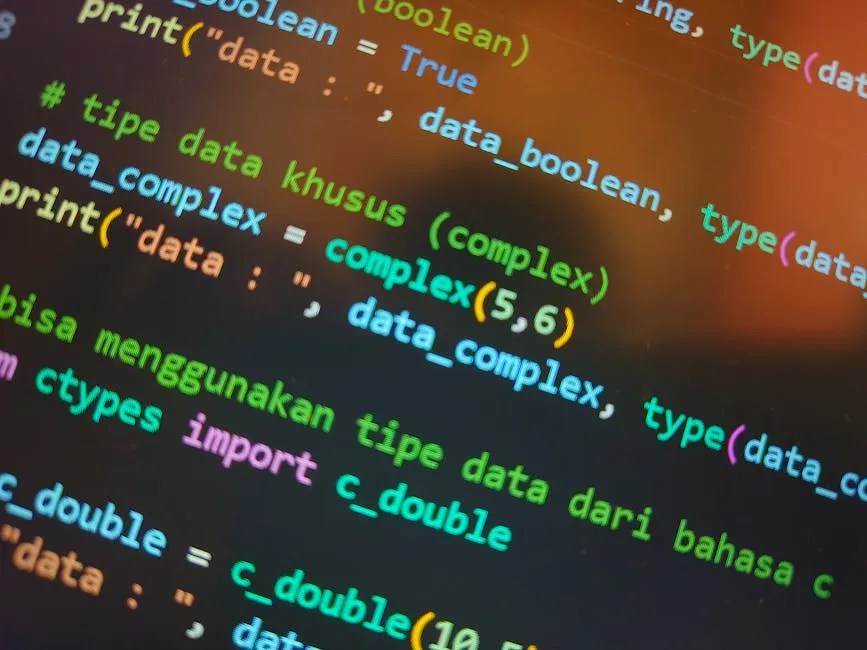Introduction
In our data-driven world, understanding the role of data has become paramount. Every click, swipe, and purchase generates data. This avalanche of information demands skilled professionals to make sense of it. Enter statistics and data science! While these fields are often considered interchangeable, they serve distinct purposes.
Statistics is the backbone of data analysis, providing methods to interpret data and derive conclusions. On the other hand, data science is a blend of statistics, programming, and domain expertise aimed at extracting insights from vast datasets.
Many people confuse the two, thinking they’re the same. However, grasping their differences is essential for anyone looking to pursue a career in either area. This article will shed light on these differences, providing clarity on the skills and applications of both fields.
Expect to learn the foundational concepts of each discipline, their unique approaches to problem-solving, tools used, and potential career opportunities. By the end, you’ll have a clearer understanding of which path may align with your interests and career aspirations.

For a deeper dive into the foundational concepts of statistics, check out this introduction to statistical learning with Python.
The Foundations of Each Field
What is Statistics?
Statistics is a branch of mathematics that focuses on data collection, analysis, interpretation, presentation, and organization. It’s been around for centuries, evolving alongside the need for data-driven decisions. Statisticians work with numerical data to uncover patterns, test hypotheses, and make predictions.
The importance of statistics in data analysis and decision-making cannot be overstated. It provides the tools to summarize data, draw inferences, and make sound conclusions. This discipline is the bedrock upon which many fields, including economics, psychology, and health sciences, stand.
Key concepts in statistics include:
- Mean: The average of a set of numbers, giving a central value.
- Median: The middle number in a sorted list, useful for understanding data distribution.
- Mode: The most frequently occurring value in a dataset, indicating common trends.
- Hypothesis Testing: A method used to determine if a claim about a dataset is statistically valid.
- Regression Analysis: A technique to understand relationships between variables and predict outcomes.
These concepts form the core of statistical analysis, enabling statisticians to provide valuable insights and aid in decision-making processes. Whether in business, healthcare, or social sciences, statistics plays a crucial role in informing strategies and understanding complex scenarios.
If you’re looking to dive deeper into the world of statistics, consider picking up Practical Statistics for Data Scientists. This book offers a hands-on approach, making statistical concepts accessible and applicable, perfect for the aspiring data professional!
For a comprehensive guide to hypothesis testing, refer to the statistics hypothesis testing cheat sheet.
What is Data Science?
Data science is a multidisciplinary field combining statistics, programming, and domain expertise. It’s all about extracting meaningful insights from data, regardless of its form or size. The journey of data science began in the 1960s, evolving from simple statistical analysis to a robust field driven by technology and large datasets.
At its core, data science uses various techniques and tools to analyze and interpret data. It incorporates statistical methods to understand data patterns, machine learning to create predictive models, and data mining to discover hidden insights. This blend enables data scientists to turn complex data into actionable strategies.
Key concepts in data science include big data, which refers to vast volumes of structured and unstructured data; machine learning, a subset of artificial intelligence that allows systems to learn from data; data mining, which discovers patterns in large datasets; and artificial intelligence, which simulates human intelligence to perform tasks. Together, these components empower organizations to make data-driven decisions that can enhance efficiency and performance.
If you’re curious about getting started with data science, grab a copy of Data Science for Dummies. This book simplifies complex concepts, making it perfect for beginners eager to learn the ropes!

Comparing Statistics and Data Science
Key Differences in Approach
Problem-Solving Techniques
Statistics and data science take different paths to arrive at solutions. Statisticians often rely on deductive reasoning. They start with a hypothesis and use data to validate it, focusing on smaller datasets. Hypothesis testing and statistical significance are their bread and butter. Their methods ensure that conclusions are reliably drawn from the data.
On the other hand, data science employs inductive reasoning. Data scientists analyze large-scale data to find patterns and trends, often without a predefined hypothesis. Predictive modeling is key here. They use algorithms to make predictions based on data, allowing for more flexibility and adaptability in their analyses.
Types of Data Handled
When it comes to data, statistics prefers structured data. This means it typically handles smaller, well-organized datasets where relationships between variables can be easily identified. Think of surveys or experimental results where every data point is neatly categorized.
Data science, however, is a bit of a wild child. It embraces both structured and unstructured data, diving into big data lakes filled with everything from social media posts to images. This versatility allows data scientists to analyze diverse data types, providing richer insights and more comprehensive analyses.

In conclusion, while statistics and data science share common goals, their approaches and the types of data they handle highlight their distinct roles. Statisticians focus on smaller, structured datasets and methodical reasoning, while data scientists harness the power of big data and flexible methods to drive innovation and insights. Understanding these differences can help you decide which path aligns with your interests and career aspirations.
Tools and Technologies
Common Statistical Tools
Statisticians rely heavily on specialized software to analyze data. Some popular tools include SPSS, SAS, R, and Excel.
SPSS (Statistical Package for the Social Sciences) is a favorite among social scientists. It simplifies complex statistical analyses and makes presenting results a breeze. Think of it as your friendly neighborhood data wizard!
SAS (Statistical Analysis System) shines in corporate environments. It excels in advanced analytics, business intelligence, and predictive analytics. Businesses love it because it delivers robust insights that help make informed decisions.
R is like the Swiss Army knife of statistical tools. It’s open-source and features thousands of packages for every statistical need imaginable. Need to visualize data? R’s got you covered with ggplot2. Want to perform regression analysis? R does that too!
Excel, the classic spreadsheet software, remains a staple. Its simple interface allows users to conduct basic statistical analyses. Just remember, while Excel is a trusty companion, it’s not always the best choice for heavy lifting.

These tools play a vital role in statistical analysis, surveys, and experimental designs. They help statisticians uncover patterns, validate hypotheses, and provide actionable insights.
To get a solid grasp of R programming, consider checking out R Programming for Data Science. This book is a fantastic resource for anyone looking to deepen their understanding of data science and statistical programming!
For a comprehensive guide on descriptive statistics in Excel, visit descriptive statistics in Excel.
Common Data Science Tools
Data scientists have a different toolkit, designed for handling vast amounts of data. Key players include Python, R, SQL, TensorFlow, and Hadoop.
Python is the superstar of data science. With libraries like Pandas and NumPy, data manipulation becomes a walk in the park. Python also integrates well with machine learning frameworks, making it a go-to choice for many.
If you’re looking to master data analysis with Python, consider grabbing Python for Data Analysis. This book will guide you through the essential techniques and tools you need to succeed in data science!
R also makes a repeat appearance here. Its versatility allows for both statistical analysis and data visualization. When combined with Shiny, R can even create interactive web applications!
SQL (Structured Query Language) is essential for managing databases. Data scientists use SQL to retrieve and manipulate data from databases, ensuring they can access the information needed for analysis.

TensorFlow is a powerhouse for machine learning. Developed by Google, it allows data scientists to build complex neural networks. Whether you’re training a model to recognize images or predict trends, TensorFlow is up to the task.
If you’re venturing into machine learning, check out Machine Learning Yearning. This book, written by Andrew Ng, is a must-read for anyone serious about mastering machine learning concepts!
Hadoop is the big data guru. It enables the storage and processing of large datasets across clusters of computers. Data scientists love it for its ability to scale and handle unstructured data.
These tools are crucial for data manipulation, visualization, and machine learning applications. They empower data scientists to extract insights from big data, drive innovative solutions, and foster data-driven decision-making.

Career Opportunities and Salary
Careers in Statistics
Statistics offers a range of career opportunities for those with the right skills. Common job titles include Statistician, Data Analyst, and Biostatistician.
Statisticians analyze data to identify trends and inform decisions. They typically earn an average salary of around $82,450 annually. The job outlook for statisticians is promising, with a projected growth rate of 31% through 2031. This means more opportunities for those entering the field!
Data Analysts are the interpreters of data. They transform raw numbers into understandable insights. Their average salary is approximately $75,000 per year. This role is in high demand, especially as businesses increasingly rely on data to drive decisions.
Biostatisticians work primarily in the healthcare sector, analyzing data related to health and medicine. With a growing emphasis on data-driven healthcare, their average salary tops $90,000 annually. The demand for biostatisticians is expected to rise, especially with advancements in medical research.

Overall, careers in statistics are lucrative and growing, making it an appealing field for aspiring professionals.
Careers in Data Science
Data science is one of the fastest-growing sectors today. Common job titles include Data Scientist, Machine Learning Engineer, and Data Engineer.
Data Scientists are the rock stars of data. They analyze complex datasets to derive insights and fuel decision-making. Their average salary is around $125,000, with top earners in major tech hubs making well over $150,000. The job market for data scientists is projected to grow by 35% over the next decade.
Machine Learning Engineers specialize in designing algorithms that enable machines to learn from data. Their average salary is about $124,000, with strong demand across industries. Companies are eager for these experts to help them harness the power of AI.
Data Engineers build the infrastructure that supports data processing and analysis. Their average salary sits around $110,000. As organizations continue to invest in data solutions, the demand for data engineers is expected to rise.

In summary, data science careers offer impressive salaries and robust job growth. The appeal of this field is undeniable, attracting talent eager to make an impact through data.
Education and Skills Required
Educational Pathways for Statisticians
Statisticians are the number crunchers of the data world. To become one, a solid educational background is essential. Most aspiring statisticians earn a bachelor’s degree in statistics, mathematics, or a related field. Coursework often includes probability theory, statistical inference, and experimental design. Advanced positions may require a master’s degree or Ph.D., emphasizing deeper statistical theories and methodologies.
Essential skills for statisticians include statistical analysis and proficiency in programming languages. Familiarity with software such as R, SAS, or SPSS is crucial for data manipulation and analysis. Additionally, strong communication skills are vital. Statisticians must convey complex findings in a way that’s easy for non-specialists to grasp. After all, what’s the point of crunching numbers if no one understands them?
Moreover, statisticians must possess critical thinking abilities. They often design experiments and determine sample sizes, making sound judgment calls based on data. This analytical mindset is key to drawing accurate conclusions from results.

Lastly, attention to detail is paramount. A small error in data entry or analysis can lead to significant misinterpretations. In a field where precision matters, being detail-oriented is not just a bonus—it’s a necessity.
Educational Pathways for Data Scientists
Data science is where the magic happens. To enter this field, aspiring data scientists typically pursue degrees in computer science, data science, or related disciplines. Coursework often covers machine learning, data mining, and big data technologies. A master’s degree is increasingly common, providing a competitive edge.
Data scientists need a different set of skills compared to statisticians. Proficiency in programming languages like Python and R is essential. These languages are fundamental for data manipulation, analysis, and building machine learning models. Knowledge of SQL is also important for querying databases effectively.
Machine learning is a cornerstone of data science. Data scientists must understand various algorithms and how to apply them to real-world problems. Additionally, data wrangling skills are crucial for cleaning and organizing messy datasets. After all, raw data is rarely in a ready-to-use format.

Business acumen is another vital skill. Data scientists must understand the business context behind their analyses. This understanding helps them make data-driven recommendations that align with company goals.
Finally, data visualization is critical in this role. Data scientists need to present their findings in engaging, clear ways. Tools like Tableau and Matplotlib can help create compelling visuals that tell a story with the data.
If you want to get started with Tableau, consider the book Tableau 2020 for Dummies. This guide provides an accessible introduction to data visualization, making it perfect for beginners!
In summary, both statisticians and data scientists require solid educational foundations and varied skill sets. While their paths may differ, both play pivotal roles in our data-driven world.
Similarities Between Statistics and Data Science
Overlapping Skills and Methodologies
Statistics and data science may diverge in their approaches, but they share essential skills and methodologies. Both fields rely heavily on data collection and cleaning processes. Gathering accurate data is the first step toward meaningful analysis. Whether it’s through surveys in statistics or data scraping in data science, the importance of data quality cannot be understated.

Data visualization is another area of overlap. Both statisticians and data scientists need to present their findings effectively. Visualizing data helps clarify complex information, making it accessible to a broader audience. Tools like ggplot2 in R or Tableau are commonly used to create engaging visuals that highlight key insights.
Moreover, both fields utilize statistical methods to draw conclusions. Whether it’s hypothesis testing in statistics or predictive modeling in data science, the underlying principles of statistical analysis remain integral. Understanding concepts like correlation, regression, and variance helps professionals in both domains make data-driven decisions.
Ultimately, while distinctions exist between statistics and data science, their overlapping skills and methodologies contribute to a richer understanding of data. Both disciplines harness the power of data to extract insights, driving informed decision-making across various sectors.
Collaborative Roles
Data scientists and statisticians often form a dynamic duo in organizations. Their combined expertise leads to insightful analyses and innovative solutions. While statisticians focus on rigorous data interpretation, data scientists harness advanced algorithms to make sense of large datasets. Together, they tackle challenges from various angles, ensuring robust findings.
Consider a real-world example: at a healthcare startup, a statistician designs clinical trials to test a new drug. They determine sample sizes and analyze results using traditional statistical methods. Meanwhile, a data scientist works on patient data from electronic health records. They apply machine learning techniques to predict patient outcomes based on historical data.

The collaboration doesn’t end there! The statistician’s insights guide the data scientist’s model refinement. By sharing their expertise, they enhance the accuracy of predictions. This teamwork is seen in industries like finance, where statisticians evaluate risk while data scientists build predictive models to forecast market movements.
In another case, a retail company utilizes both roles to optimize inventory management. The statistician analyzes sales trends, identifying peak shopping periods. Simultaneously, the data scientist employs algorithms to predict future demand based on various factors. Their joint efforts help the company reduce stockouts and improve customer satisfaction.
These examples illustrate that when statisticians and data scientists work together, they can achieve remarkable results. By combining their skills, they create a powerful synergy that drives data-driven decision-making and propels organizations forward.
Conclusion
In summary, statistics and data science, while distinct, share a common foundation. Statistics provides the mathematical tools necessary for data analysis, while data science builds upon these principles by incorporating programming and machine learning. Statisticians rely on smaller datasets and rigorous methodologies, while data scientists embrace the complexities of big data and predictive modeling.
Understanding the differences between these fields is crucial for anyone considering a career in either domain. Statisticians typically excel in hypothesis testing, sampling, and data interpretation, while data scientists leverage their programming skills to manipulate and model large datasets.
Both fields are essential in today’s data-driven landscape. Each plays a unique role in helping organizations make informed decisions. As data continues to grow in importance, the demand for skilled professionals in both statistics and data science will only increase.
When choosing between these paths, consider your interests and strengths. If you enjoy theoretical analysis and working with numbers, statistics may be your calling. If you’re drawn to programming and solving complex problems with data, data science could be a better fit.
Ultimately, both fields offer rewarding career opportunities and the chance to make a meaningful impact. Embrace your curiosity and make an informed decision that aligns with your aspirations. The future is bright for both statisticians and data scientists!
FAQs
Why are statistics and data science often confused?
Statistics and data science frequently overlap in their methodologies, leading to confusion. Historically, statistics laid the groundwork for data science, which emerged as a response to the increasing volume and complexity of data. Both fields aim to extract insights from data, but their approaches and applications differ significantly.
Can a statistician transition into data science?
Absolutely! Statisticians possess valuable skills that can transition smoothly into data science. Their expertise in data analysis, hypothesis testing, and statistical modeling provides a strong foundation. To make the shift, they may need to learn programming languages like Python or R and familiarize themselves with machine learning techniques.
Is data science a subset of statistics?
While data science incorporates statistical methods, it is not merely a subset of statistics. Data science encompasses a broader range of disciplines, including computer science and domain expertise. It aims to analyze large datasets using advanced algorithms and computational techniques, which goes beyond traditional statistical analysis.
What are the key skills needed for a career in data science?
Essential skills for data scientists include proficiency in programming languages (Python, R), knowledge of machine learning algorithms, data wrangling, statistical analysis, and strong communication abilities. A background in mathematics and statistics is also crucial for understanding data patterns and making informed decisions.
Which career path has better job prospects?
Both statistics and data science offer promising job prospects, but data science currently leads in demand. With the rise of big data and the need for data-driven decision-making, data science roles are expected to grow significantly. Statisticians also have strong job outlooks, especially as industries increasingly recognize the value of data analysis.
Please let us know what you think about our content by leaving a comment down below!
Thank you for reading till here 🙂
All images from Pexels




